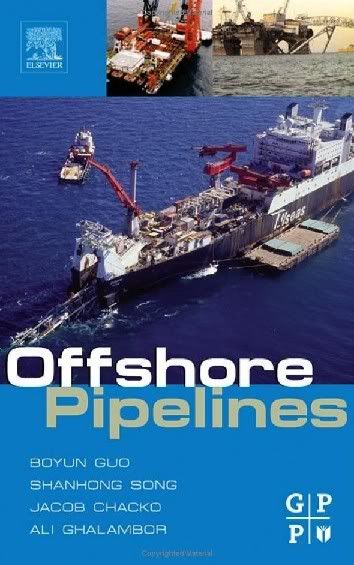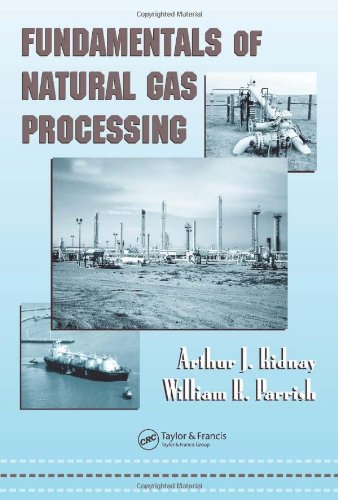 Book Description:
Book Description:Download from here
 Book Description:
Book Description: Author: Norton J. Lapeyrouse
Author: Norton J. Lapeyrouse Table of Contents:
Table of Contents: The naturally occurring petroleum deposits which the petroleum engineer encounters are composed of organic chemicals...
The naturally occurring petroleum deposits which the petroleum engineer encounters are composed of organic chemicals... Description:
Description: Familiarizes field personnel with basic gas lift principles; operating procedures for adjusting, regulating, operating, and troubleshooting gas-lift equipment; and well conditions. Covers conventional practices and concepts. Illustrated with drawings of typical gas-lift installations and related equipment, as well as actual charts illustrating operation of, and problems encountered in, gas-lifted wells.
Familiarizes field personnel with basic gas lift principles; operating procedures for adjusting, regulating, operating, and troubleshooting gas-lift equipment; and well conditions. Covers conventional practices and concepts. Illustrated with drawings of typical gas-lift installations and related equipment, as well as actual charts illustrating operation of, and problems encountered in, gas-lifted wells. Written for use as a college textbook in a petroleum engineering curriculum, the text presents engineering science fundamentals as well as examples of engineering applications involving those fundamentals. Two appendices are included along with numerous examples.
Written for use as a college textbook in a petroleum engineering curriculum, the text presents engineering science fundamentals as well as examples of engineering applications involving those fundamentals. Two appendices are included along with numerous examples. Subjects Covered Include:
 Basic Petroleum Geology presents the fundamentals of geology in terms of environments of sedimentary deposition, petroleum occurrence, exploration, and recovery. The book provides an integrated overview of petroleum geology concepts and vocabulary in clear, easy-to-understand language.
Basic Petroleum Geology presents the fundamentals of geology in terms of environments of sedimentary deposition, petroleum occurrence, exploration, and recovery. The book provides an integrated overview of petroleum geology concepts and vocabulary in clear, easy-to-understand language. Petroleum exploration and petroleum production make use of many of the same geological parameters. It is essential that geologists, geophysicists, and engineers share a common understanding of the processes in the geologic record. It is just as important that petroleum managers, landmen, and technicians, as well as attorneys, financiers, and other nontechnical professionals be conversant with the terminology and fundamental principles of petroleum occurrence, exploration, and production. Basic Petroleum Geology addresses this need by providing an overview of earth structure, plate tectonics, geologic time, historical geology, and minerals and rocks. The book has several excellent chapters on weathering, erosion, and deposition in marine, fluvial, lacustrine, desert, and glacial environments, in the context of petroleum geology. A comprehensive chapter on structural geology demonstrates how to identify structural features and petroleum traps. It includes geometric studies and three-dimensional structural representations. Another chapter examines post-depositional processes, including diagenesis, fracturing, sediment compaction, and subsurface water, which affect the distribution and migration of petroleum. Finally, the basics of rock properties, hydrocarbon fluids, fluid flow, and recovery mechanisms relate the geologic environment to the process of hydrocarbon production. The clarity and completeness of the text, the numerous illustrations, and the substantial index make Basic Petroleum Geology a valuable reference for geology students and petroleum professionals who require a basic understanding of geological concepts.
Uniquely, this book is structured to reflect the sequential and cyclical processes of exploration, appraisal, development and production. Chapters dedicated to each of these aspects are further illustrated by case histories drawn from the authors' experiences. Petroleum Geoscience has a global and 'geo-temporal' backdrop, drawing examples and case histories from around the world and from petroleum systems ranging in age from late-Pre-Cambrian to Pliocene.
In order to show how geoscience is integrated at all levels within the industry, the authors stress throughout the links between geology and geophysics on the one hand, and drilling, reservoir engineering, petrophysics, petroleum engineering, facilities design, and health, safety and the environment on the other.
 Summary:
Summary:  Book Description:
Book Description:  Book Description:
Book Description: